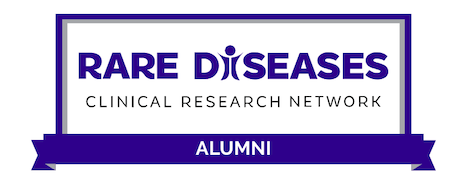Pilot Project Program
Our consortium does not currently have fellowship or grant funding opportunities available. Previous opportunities are listed below.
Introduction
The Dystonia Coalition is seeking applications for its Pilot Projects Program. The goal of the Pilot Projects Program is to foster the most promising clinical and translational studies of direct relevance to dystonia. Below is a summary of the application and selection process.
Applications must focus on clinical or translational projects with direct relevance to dystonia. The Dystonia Coalition is particularly interested in applicants focusing on projects that exploit data and/or resources already collected by the Dystonia Coalition and/or projects that encourage collaborations by involving different centers of the Dystonia Coalition, although independent projects related to dystonia are also welcome.
Application instructions
- Applicants who are not part of the Dystonia Coalition may also apply. US citizenship and affiliation with a US institution are not required.
- Please note that any application that requires new patient recruitment will need to have independent IRB approval, and this approval may have to be reviewed by NIH.
- Any domestic application that involves new patient recruitment across multiple centers must follow the NIH single IRB rule for each of its centers. This requirement does not apply to studies at foreign sites.
Applications Should Include the Following
- The Dystonia Coalition Pilot Project Program Cover Sheet.
- A 3-4 page research proposal letter. This proposal should include background & significance, experimental design & methods, personnel and resources available, and information regarding human subjects. Preliminary data are not required, but some indication of feasibility is valuable. All projects must conform to current standards for larger NIH grants, especially with regard to budget expenses and the involvement of human subjects.
- Bibliography (not included in the page limit).
- Budget of up to 50,000 USD with no more than 10% indirect (institutional overhead) costs (no longer than 1 page for the budget justification).
- NIH-style bio sketch for key personnel. For directions and sample document, click here.
- Institutional approval/acknowledgement of the research plan and budget.
- If IRB approval is required, include the IRB approval letter and consent document or proof of submission of protocol to the IRB.
- Signed DC Bylaws document.
- Optional items may include letters of supporter copies of manuscripts in press. Published articles should not be included in the application.
Submission Guidelines
- Submit all materials in a single PDF file of less than 2MB, in the order listed above by email, to Gamze Kilic-Berkmen (dystoniacoalition@emory.edu), who will confirm receipt of each application with the sender. Paper applications cannot be accepted.
- Deadline for receipt of applications is April 1, 2023.
Selection Process and Criteria
- Applications will be reviewed in May 2023; awards will begin as early as July 2023.
- Reviews will be conducted by rotating committee of Dystonia Coalition members and Patient Advocacy Groups. If new subject recruitment is required, the project may need to be approved also by the NIH.
- In accordance with policies previously used by the Dystonia Coalition, applications may be shared with relevant patient advocacy groups for possible co-funding.
- Priority will be given to the following applications:
- Relevance to dystonia. Is the project a clinical or translational study of direct relevance to dystonia? Studies focusing on isolated dystonias will be given highest priority. Studies focusing on combined dystonias and basic science will begiven lower priority.
- Potential for impact. Is the project likely to yield results with high impact? Having three aims is not required; one strong aim is preferred over the addition of extra weaker aims.
- Potential as seed funding. Is the project likely to yield pilot data that could aid in the application for a larger grant through other funding mechanisms?
- Value for promoting collaboration across Dystonia Coalition participating sites. Does the project stimulate collaboration and interaction, and take maximal advantage of the unique opportunities available through other members of the Dystonia Coalition? Studies involving single sites or small pre-existing collaborations will be given lower priority.
- Timeline. Can the project be completed in 1 year? A one-year timeline is required.
- Budget. Can the project be completed with a modest budget? Do not target the maximum amount of funding unless necessary.

